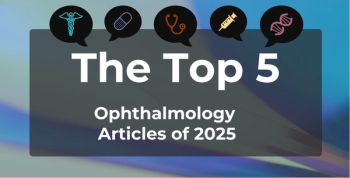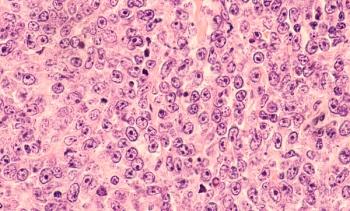
Horizon's OMNIA Plan: Unraveling the Patient-Centered Medical Home?
At a State House press conference, critics of OMNIA highlight early problems, with a physician describing how the tiered health plan is disrupting existing patient-centered medical homes.
Thursday brought a new turn in the saga over OMNIA, Horizon Blue Cross Blue Shield of New Jersey’s deep dive into population health.
A State House press conference featured a host of hospital executives and the highest profile Republican to date to call for revisiting OMNIA’s tiered health plan. With Governor Chris Christie’s presidential aspirations finished, some wonder whether he will now ask the NJ Department of Banking and Insurance (DOBI) to take another look, or wait for the legislature to act.
“In my judgment, if you’re going to call a hospital first or second tier, it should be based on the quality of the hospital,” said Assemblyman Jon Bramnick, Republican leader in New Jersey’s lower house. Bramnick repeated criticism that it remains unclear how Horizon selected hospitals for different tiers, and that some hospitals were left out of the preferred group with no warning or opportunity to appeal.
But it was the observation from a physician that suggests OMNIA has bigger problems than angry hospital executives and politicians. Rob Pedowitz, DO, medical director of Family Practice at CentraState Medical Center in Freehold, New Jersey, said OMNIA’s tiers, touted to save money and improve quality of care, are disrupting existing Patient-Centered Medical Homes (PCMH). If widespread, this would put OMNIA at odds with existing value-based initiatives that Horizon itself has promoted and nurtured in recent years.
Patient-Centered Medical Homes are among the efforts of
Nationwide, the PCMH model has been studied for more than a decade as a way to better coordinate patient care by developing stronger, tightly controlled relationships among physician practices, hospitals, and select specialists. The primary care physician is the pivot point, ensuring that patients do not receive unnecessary tests or specialist referrals that drive up costs.
NJ regulators have already declined to reverse their September approval of OMNIA, which created 2 levels of hospitals and doctors. If the plan’s enrollees use providers in Tier 1, they face lower out-of-pocket costs than they do using providers in Tier 2. Before OMNIA took effect January 1, 2016, the outcry came largely from Tier 2 hospitals fearing lost revenue. Thursday’s event suggests that frustration is spreading down to doctors and patients, some of whom selected OMNIA based only on whether their personal physician was in Tier 1.
Pedowitz described the flaws he is encountering already, which create ethical and professional dilemmas for doctors. While Pedowitz is in Tier 1 as a physician, his hospital, CentraState, is in Tier 2. This means patients who chose OMNIA because Pedowitz was in the plan must pay higher out-of-pocket costs if they use CentraState, should they need a referral.
To do right by his patients, Pedowitz feels obligated to share the financial differences between CentraState and a Tier 1 hospital. “For a lot of people, even $100 makes a big difference,” he said.
But this defeats the point of his PCMH relationship with CentraState. In an interview with The American Journal of Managed Care, Pedowitz explained that once his patient goes to another hospital, he loses all control of referrals to specialists and other costs. He said Horizon BCBSNJ has become aware of this problem as patients have started to use OMNIA coverage, but so far there isn’t a solution. Observers familiar with New Jersey's healthcare market say CentraState's problem isn't isolated, but the only answer is for consumers to be more educated before they pick a plan.
“We want to work together with Horizon,” Pedowitz said during the press conference. “Let’s not let our doctors and patients get separated by an issue that could have been prevented.”
Evidence supporting the PCMH model shows that if properly engaged, the primary care physician can make or break how well patients use preventive services and stay on their medications, which is among the biggest challenges when patients have chronic conditions. A study of 155,000 adults treated in a mix of community health centers and hospital-affiliated primary practices found that those who were connected to a personal physician were more likely to get mammograms and had better rates of glycated hemoglobin (A1C), for example.1
A separate study by the Commonwealth Fund found that a strong PCMH not only reduced gaps in care, but could help overcome health disparities associated with socioeconomic factors, if the patients also had insurance.2
The challenge, of course, is figuring out how to overlay tiered health plans with the PCMH in a way that lets the 2 work together. Critics of the way Horizon was approved say the lack of transparency, and the fact that it was unveiled on the eve of open enrollment for New Jersey’s public employees, left no time for these wrinkles to be uncovered and fixed.
Both Horizon and the New Jersey Association of Health Plans (NJ-AHP) note that tiered networks are not new to the state. Aetna and AmeriHealth offer such plans, but with much less market share they have not come under the same scrutiny. Proponents of OMNIA say without it, some could not afford health coverage.
“It is vital to preserve consumer access to lower-cost coverage and benefit designs with lower cost-sharing,” said Ward Sanders, president of NJ-AHP.
A flurry of lawsuits have been filed over the way OMNIA was created, the way it was advertised, how hospitals were informed of their fate, and whether contracts were violated. At hearings and press conferences, legislators have asked why so many safety-net and Catholic hospitals were out of the preferred tier.
Also Thursday, a group of hospitals filed a brief in its suit against DOBI; its attorney, former DOBI Commissioner Steven M. Goldman, said, “By its own admission, DOBI has stated that no analysis was done to ensure that the insurer’s method of operation is not contrary to the public interest.”
Horizon spokesman Kevin McArdle responded, “Tiered plans have been offered in New Jersey for 5 years without any evidence of provider hardship. Lawsuits, billboards, and websites aren’t going to lower the cost of healthcare in New Jersey.
“Opponents of change continue to ignore a very basic reality: the status quo in New Jersey is not sustainable for our state’s small businesses, families, and taxpayers.”
Horizon declined to address questions about disruption of PCMH relationships. Through its spokesman, DOBI declined to answer any questions, citing litigation.
Bramnick said current DOBI regulations need an overhaul, so that something like OMNIA wouldn’t happen again. He declined to answer whether he had a time limit in mind for DOBI to act before the legislature would get involved.
But he and a Democrat from the Assembly, Herb Conaway, MD, agreed that the state’s regulations should protect the doctor-patient relationship. Conaway said when regulators allow a situation in which physicians from a hospital are in one tier and the facility is in another, “That tears at the doctor-patient relationship.”
References
1. Atlas SJ, Grant RW, Ferris TG, Chang Y, Barry MJ. Patient—Physician connectedness and quality of primary care. Ann Intern Med. 2009;150(3):325—335.
2. The Commonwealth Fund. Closing the Divide: How Medical Homes Promote Equity in Health Care: Results From The Commonwealth Fund 2006 Health Care Quality Survey. Volume 62. http:// www.commonwealthfund.org/Content/Publications/ Fund-Reports/2007/Jun/Closing-the-Divide— How-Medical-Homes-Promote-Equity-in-Health-Care— Results-From-The-Commonwealth-F.aspx. Published June 27, 2007.
Newsletter
Stay ahead of policy, cost, and value—subscribe to AJMC for expert insights at the intersection of clinical care and health economics.







































